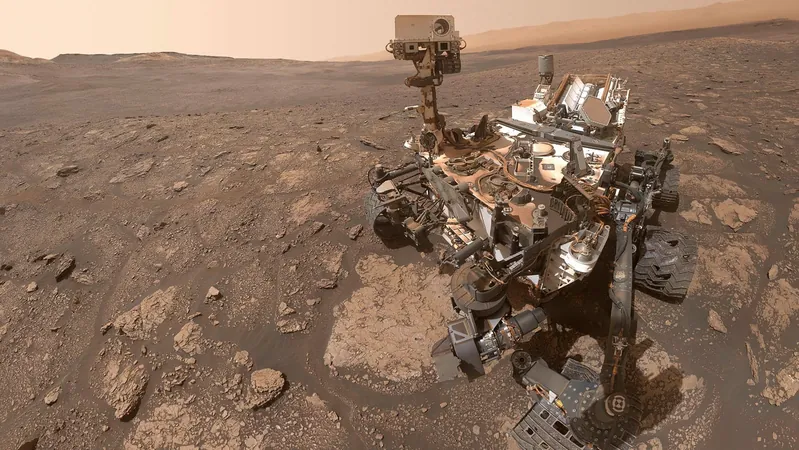
Breakthrough Mars Discovery: Curiosity Rover Uncovers Mysterious Sulphur Stones that Could Revise Our Understanding of the Red Planet's History!
2024-11-21
Author: Wei Ling
NASA's Curiosity rover has made a monumental revelation on Mars, unearthing rare sulphur-rich stones during its exploration of the Gediz Vallis region.
This groundbreaking finding sheds light on the dynamic geological and environmental history of the Red Planet, potentially rewriting the narrative of its transformation from a water-laden planet to the arid landscape we see today.
Exploring Gediz Vallis: Evidence of Ancient Water Activity
The rover's expedition through Gediz Vallis, located on the slopes of Mount Sharp within Gale Crater, represents a pivotal phase in its mission.
This area is rich with signs of ancient water activity, featuring landscapes sculpted by flowing rivers, debris flows, and landslides.
Curiosity has meticulously captured detailed 360-degree panoramas of the terrain, equipping researchers with invaluable data on the forces that have shaped Mars over millions of years.
Rare Sulphur Stones: A New Puzzle for Scientists
Among its array of discoveries, Curiosity has unveiled sulphur-rich stones showcasing yellow crystals concealed beneath white exteriors.
This intriguing revelation raises critical questions: on Earth, sulphur is typically linked to volcanic activity or hot springs, but Mount Sharp lacks such geological features.
Scientists hypothesize that these sulphur deposits may have originated from unique environmental conditions involving chemical interactions between water and minerals, though the exact mechanisms remain elusive.
Curiosity's project scientist, Ashwin Vasavada, emphasizes the importance of understanding these sulphur manifestations, suggesting they might provide crucial hints about Mars' ancient environments.
The presence of such mineral formations could indicate conditions that once supported microbial life, making these findings central to our pursuit of understanding Mars' habitability in its distant past.
What's Next for Curiosity?
As the rover advances towards its next target, known as the "boxwork formation," scientists are eager to study peculiar mineral ridges that formed through the evaporation of water.
Stretching over 20 kilometers, this formation offers a captivating glimpse into Mars’ climatic evolution and geological activity, potentially revealing further insights into the planet's water history.
Curiosity's explorations are stitching together the timeline of Mars' drastic transformation from a potentially life-sustaining world to the dry, barren desert we witness today.
By examining Brenstone formations such as Gediz Vallis and the boxwork area, researchers aim to deepen our understanding of Mars' hydrological past and its early potential for life.
Could Mars Still Hold Secrets of Life?
The tantalizing discoveries made by the Curiosity rover not only provoke thought about the Red Planet's past but also ignite speculation about its future.
Are we closer to unveiling the secrets of ancient microbial life? As Mars exploration progresses, scientists hold on to the hope that further insights from these sulphur deposits could illuminate our ongoing quest to understand life beyond Earth.
Stay tuned as we continue to unravel the mysteries of Mars!




 Brasil (PT)
Brasil (PT)
 Canada (EN)
Canada (EN)
 Chile (ES)
Chile (ES)
 España (ES)
España (ES)
 France (FR)
France (FR)
 Hong Kong (EN)
Hong Kong (EN)
 Italia (IT)
Italia (IT)
 日本 (JA)
日本 (JA)
 Magyarország (HU)
Magyarország (HU)
 Norge (NO)
Norge (NO)
 Polska (PL)
Polska (PL)
 Schweiz (DE)
Schweiz (DE)
 Singapore (EN)
Singapore (EN)
 Sverige (SV)
Sverige (SV)
 Suomi (FI)
Suomi (FI)
 Türkiye (TR)
Türkiye (TR)